Looking for a good gift for a music lover in your life? Musicians can be hard to shop for, so why not a book? Here’s a roundup of books that are either on my own wishlist or books I’ve read recently and recommend:
It’s election day here in the United States, which means a lot of Americans are feeling distracted by the prospect of voter counts and ballot results! If you can relate, consider playing one of these three folk songs (all featured in my Americana songbook) to commemorate this unique-feeling day:
Keep on the Sunny Side is an American folk song that I describe as being "relentlessly optimistic." The composer, Ada Blenkhorn, tells us that there is a silver lining, no matter how dark our storm cloud.
Gamify your music-making with my free Ukulele Bingo Cards! Use the pre-filled page to inspire your ukulele practice, or use the blank sheet to create your own.
Jennie Jenkins is one of the songs included in my newest book, Americana: 15 Easy Folk Tunes for the Ukulele, which is AVAILABLE NOW. Go check it out!
Happy October! The weather has cooled down, the leaves are falling, and autumn is in full swing where I live, so today I wanted to share a two-chord song that’s perfect for this time of year…
As my kids get older, our family life gets busier, and I find myself having to be even more intentional about how I spend my time. I know from experience that I’m happier when I’m engaging with my instruments on a consistent basis, so lately I’ve been seeking out ways to make it easier to find time to play. Here are a few ideas I’m incorporating that might be helpful to you as well:
Wildwood Flower is a beautiful ballad that uses just three chords. In this tutorial, I show you how to play it in the key of G with a beginner-friendly fingerpicking pattern. Play along on your baritone uke (like the one I’m playing) or on your uke in standard tuning—I show the chords for both!
Today I’m happy to announce I’ve added a new product to my Shop— a chord chart for baritone ukuleles! It features the same formatting as my chord chart for standard ukes. Both charts feature the same formatting so that you can easily learn the most important chords for the five most popular keys for music to be set in.
The baritone ukulele is a delightful instrument that combines the accessibility of the ukulele with the sound of a guitar. Like standard ukuleles, baritone ukuleles have four strings but with a tuning that’s similar to a guitar. Let’s compare…
Today I’m happy to share the first in a series I’ve been thinking of as Ukulele Karaoke—audio files you can sing and play along to, whether you’re jamming with friends or strumming on your own. To celebrate the holidays, and to express my gratitude for your support, I’m offering an MP3 of Jingle Bells as a free download!
Playing along to a metronome is a great way to build up your sense of timing, but hearing the “click-click” for minutes on end can get a little tiring! You can accomplish the same goal, and have a little more fun, by playing along to a backing track. Here I’m sharing a very basic rock beat for 4/4 time signature set at four different tempos: 60 bpm, 80 bpm, 100 bpm, and 120 bpm. Play along with them, won’t you?
My favorite way to play the ukulele is without having to reference any sheet music— it feels very freeing to need nothing more than my uke and tuner. But this wasn’t always possible for me. For the first several years of my strumming life, I was honestly scared to try to play without having a songbook to look at! How will I know what chord comes next? What if I make a mistake? I quickly learned that playing without looking at the music isn’t as hard as I thought it would be, and the stakes were lower than I thought. Nothing terrible happens if I play the wrong chord or forget a line of lyrics. A willingness to try and the acceptance that it will take some trial and error is all it takes (well, that and an ukulele!).
In my newest video, I build on what I covered in my first clawhammer tutorial and show you how to play the clawhammer strum with Cindy, a jaunty folk tune that’s probably hundreds of years old. When I share these American folk songs, I'm frequently conflicted as to how much history to share. I want to properly give credit when I can, but I'm not a music historian and worry about spreading incorrect information. So here's a little of what I do know:
Happy 2022!
My birthday falls in the first week of January, so the new year always feels like a double reset for me. Like many others at this time of year, I find myself reflecting on the past and looking to the future, and I thought it would be fun to share what some of my music-making goals for 2022 are. In addition to setting specific goals, I also pick an overarching theme for the year. In the past I’ve chosen themes that were designed more for my life as a mom—some prior themes were “play,” “home,” and “style.” But this year I’m planning something different. This year my theme is…
Clawhammer strumming is typically associated with the banjo, but it's a great option for the ukulele as well. In this video tutorial, I break down the clawhammer strum into really manageable steps and share an easy play-along for Li'l Liza Jane, my favorite song for practicing new techniques.
If you’re a teacher looking for resources to use in the classroom, look no further! Today I’m sharing a roundup of some of my most popular resources, all of which can be used FOR FREE in the classroom setting.
Shoo-Lie-Loo is one of my favorite American folk songs, and its simple lyrics and call-and-response format make it an easy and inclusive song for groups to sing and strum. The hope and optimism in this song make it a joyful choice to sing any time, but especially this Juneteenth, as we celebrate the emancipation of all enslaved people in the United States.
Summer is quickly approaching, bringing a lot of wonderful opportunities to play our ukuleles. Today I’m sharing a very happy (and free) digital download to help you make the most of your music-making this summer, and there are a couple different ways you can use it.
For this third installment in my series on time signature, I break down what 12/8 time signature feels like for those of us who don't have degrees in advanced music theory! Learn technical terms like "dreamy" and "swishy" and learn how to spot 12/8 time by singing through two great examples of it—"Perfect" by Ed Sheeran and "O, Holy Night" by Mariah Carey.
I was introduced to The Four Stages of Learning through a podcast (can’t remember which one, though!) a handful of years ago, and it’s a concept that’s really stuck with me. I find myself reflecting on it when I’m teaching and also when I’m thinking about my own development as a musician. If you’ve ever felt impatient by the pace of your progress, I think you’ll find this framework to be really valuable as you continue on your musical path. First I’ll explain the framework and then I’ll share a few tips on how to handle the frustration that inevitably arises when we’re learning something new. Ready?
There is a grand tradition of folk singers and musicians repurposing a melody to create a new song, and This Train is Bound for Glory is just one example. This Train shares a melody with The Crawdad Song, though the songs feel very different. The Crawdad Song has an easy-breezy quality to it, but This Train has much more of a raucous, rock-and-roll energy. Even though we’re using the same combination of chords and the same melody, we have two very different songs!
Many people take up a musical instrument at the beginning of a new year, but making a habit out of playing consistently is hard! In this video I give you some things to think about, so that you can go forward with your new instrument in a way that’s more purposeful and practical, so that you can build a practice that will last a lifetime.
Welcome!
I’m Melissa Stevenson, a music-maker and ukulele teacher living in Silicon Valley. On the Musical Mama blog, I post practical and inspiring tips for beginning ukulele players, free music-themed downloads, and video tutorials to make learning to play the ukulele as straightforward and fun as possible. Let’s play!





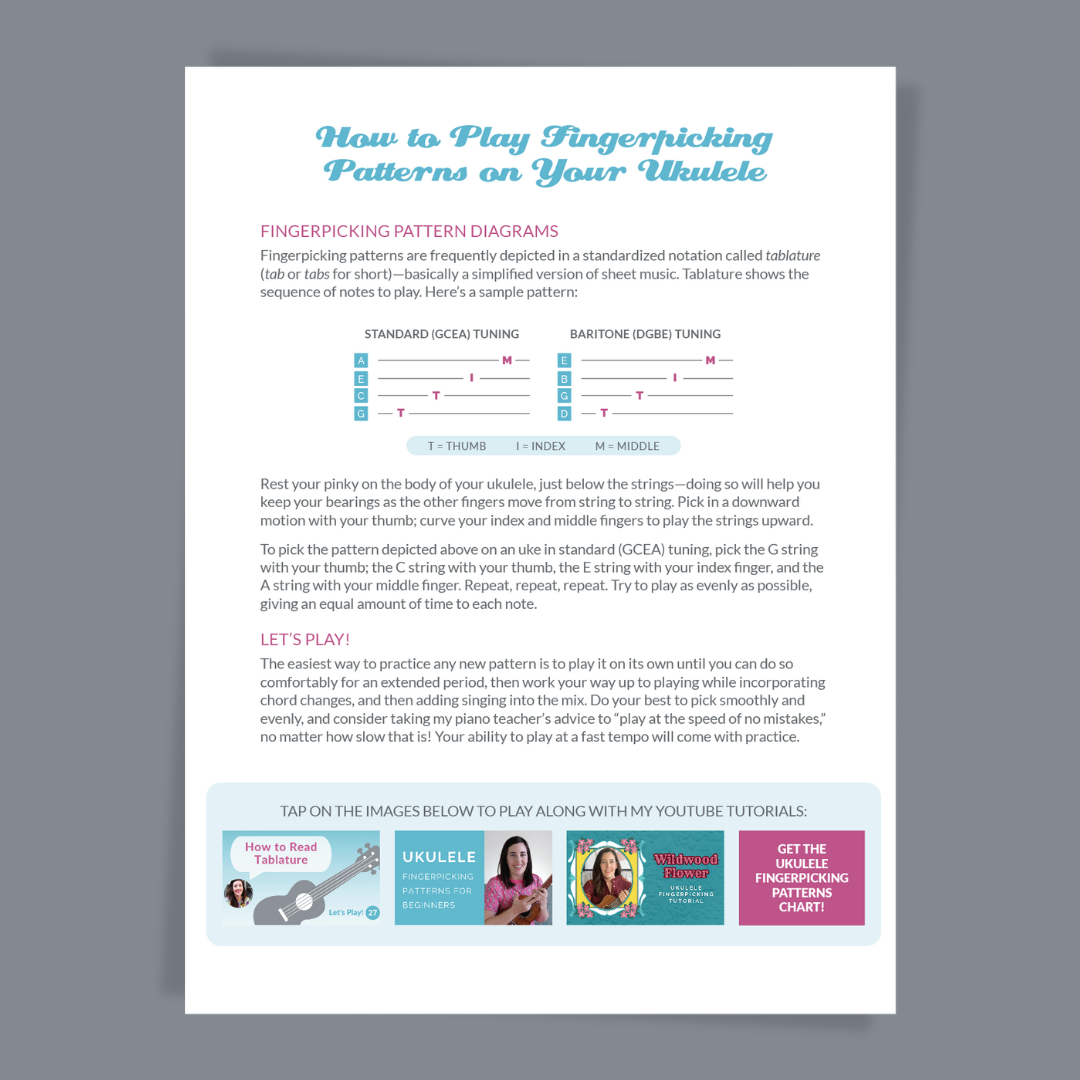


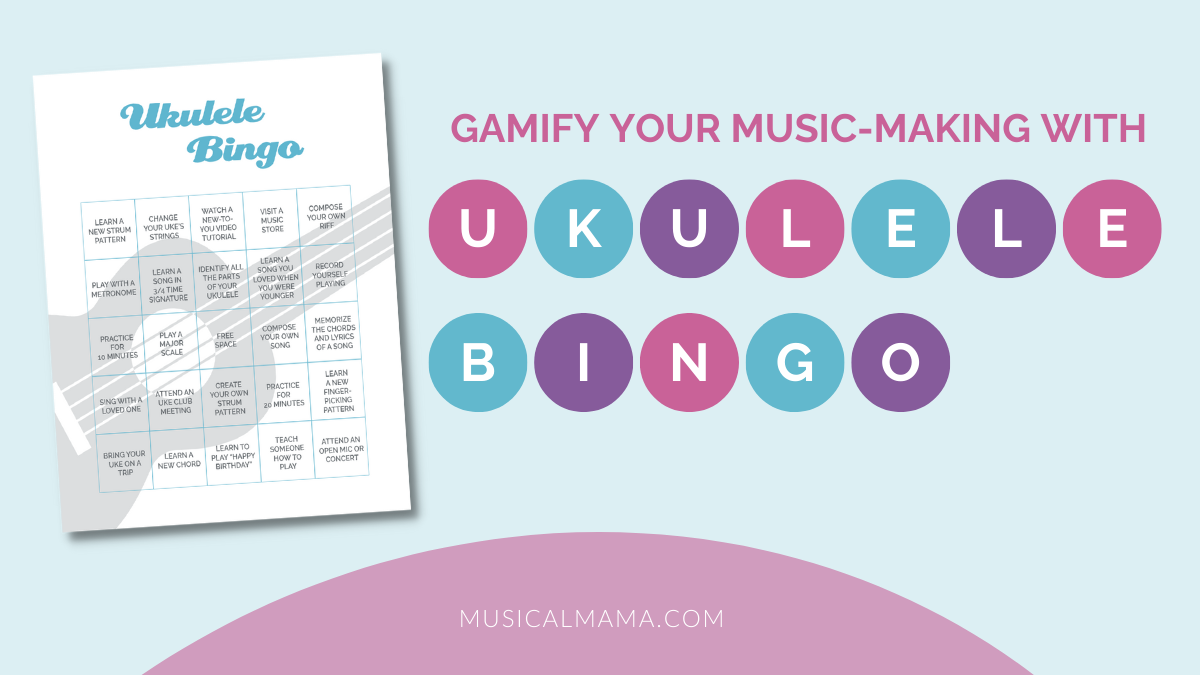




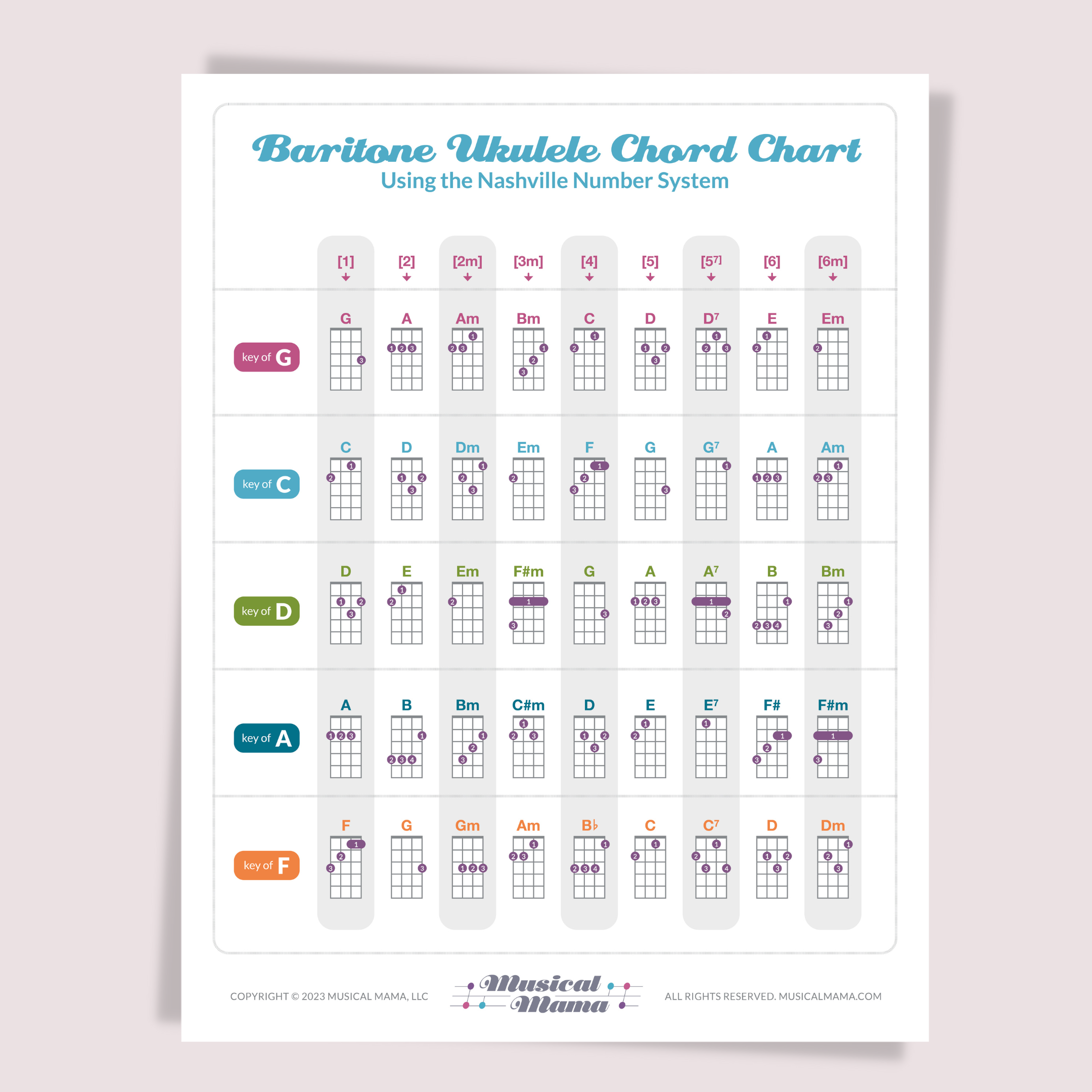


















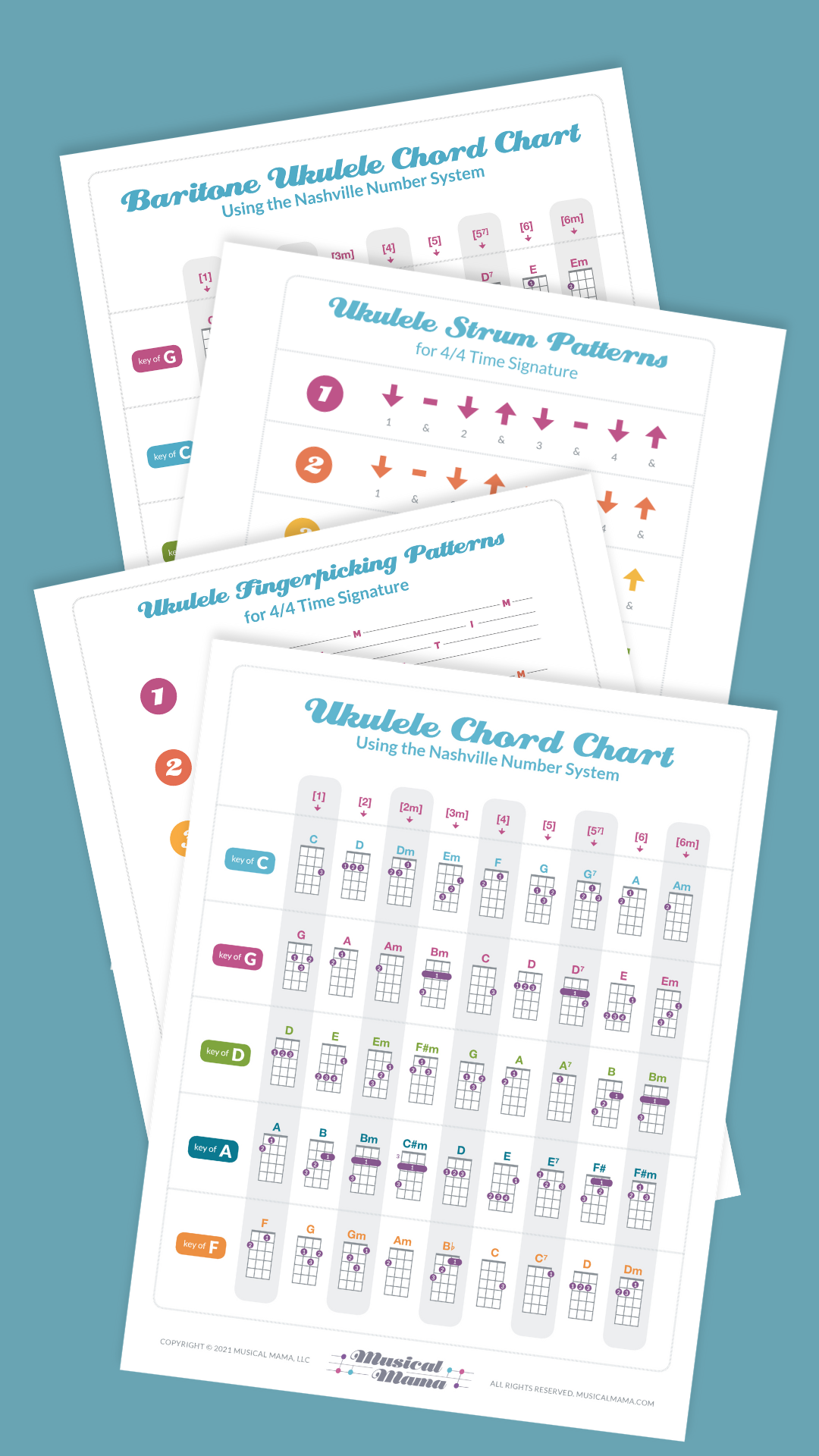
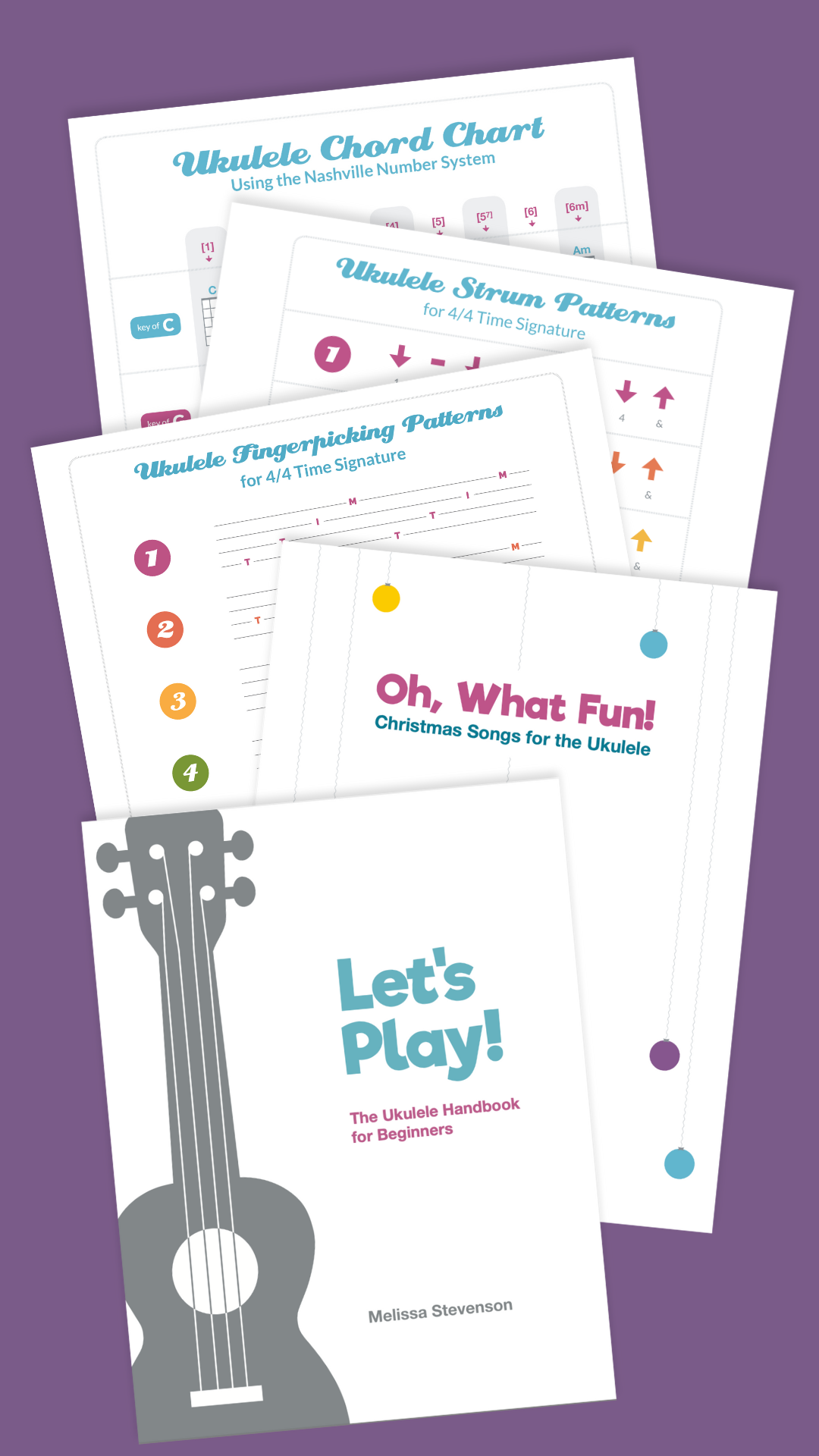
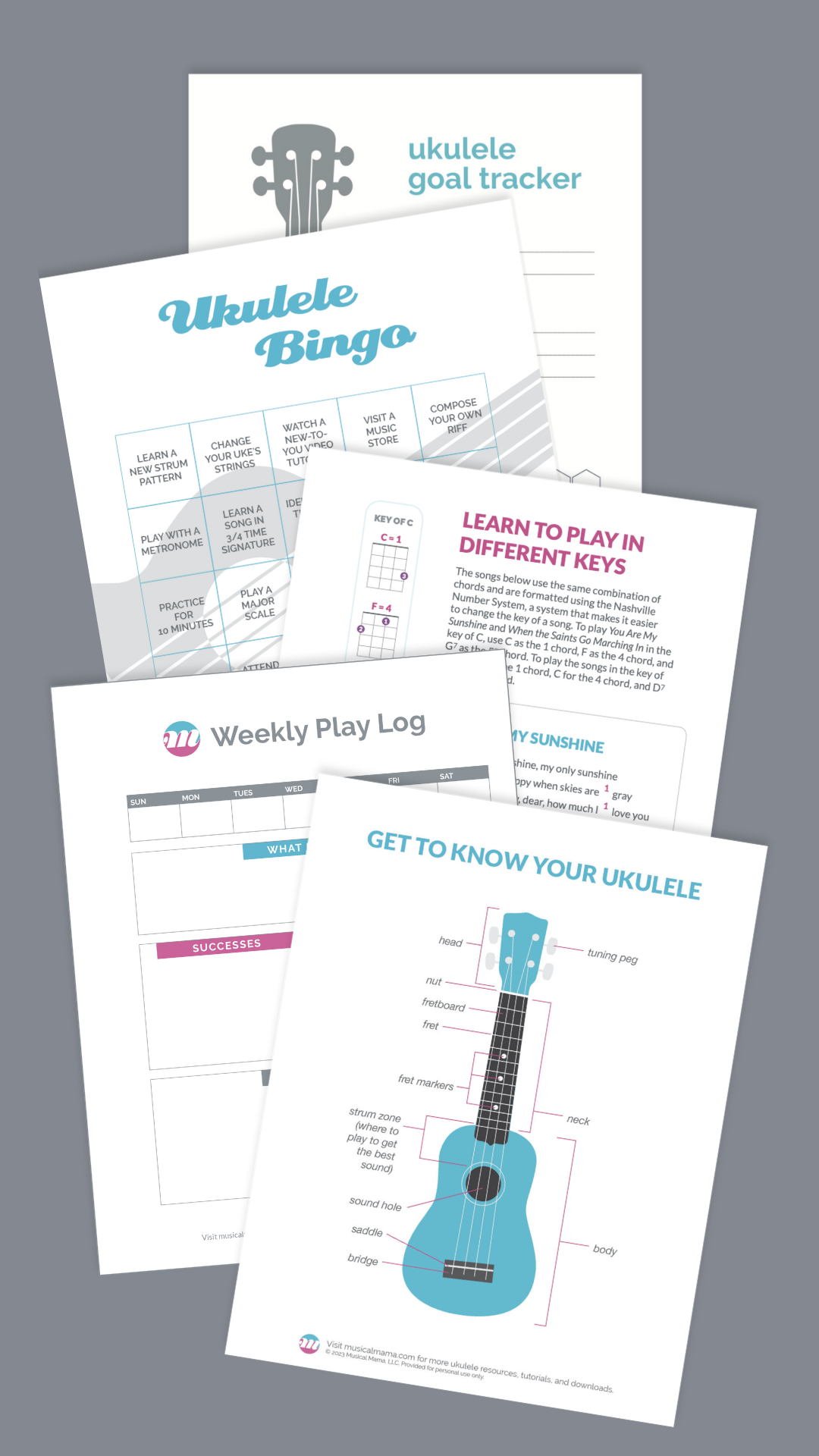

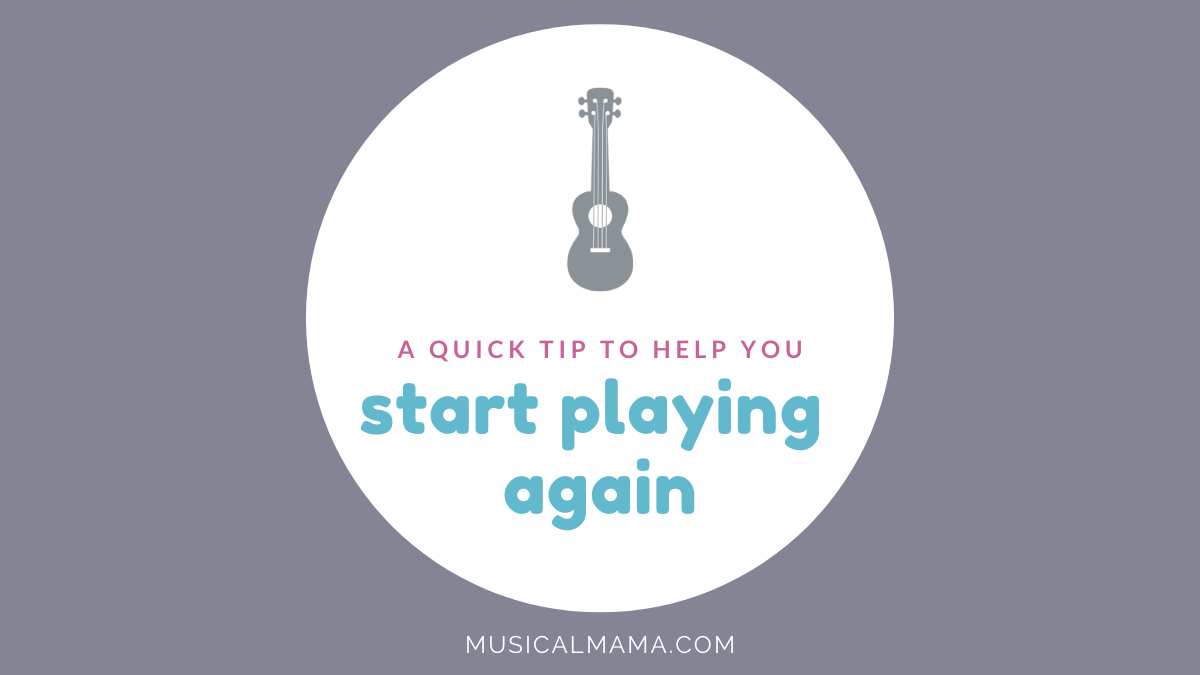










Trouble in Mind is a beautiful blues song that’s excellent for helping us develop our singing and strumming skills. In this tutorial, I play my baritone ukulele in the key of G, using just the G, C, and D7 chords, but you can use my chord charts (available for standard and baritone tuning) to easily find the chords for the eight-bar blues in five different keys!